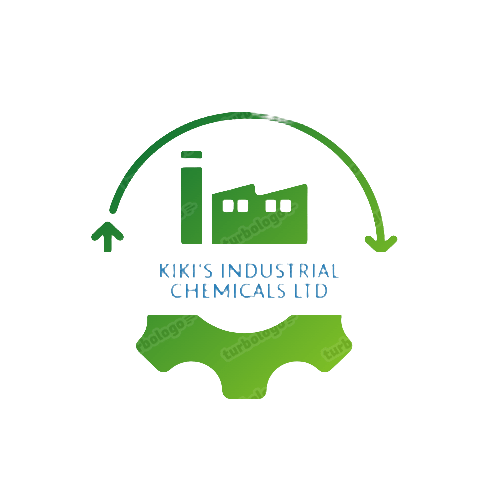Glacial Acetic acid in Nairobi Kenya
Glacial acetic acid, also known as anhydrous acetic acid, is a concentrated and pure form of acetic acid (CH3COOH). It is called “glacial” because at room temperature, it freezes and solidifies, resembling ice crystals. Acetic acid is a carboxylic acid and is the main component of vinegar.


Properties of glacial acetic acid
Glacial acetic acid, being the concentrated and pure form of acetic acid, possesses several notable properties that differentiate it from diluted acetic acid solutions. Here are some of the key properties of glacial acetic acid:
Physical State:
Glacial acetic acid is a clear, colorless liquid at room temperature. However, it has a unique property: it solidifies into a white crystalline mass at temperatures below 16.7°C (62.1°F), resembling ice crystals. This property is why it’s called “glacial.”
Odor and Taste:
Glacial acetic acid has a pungent odor and a strong, sour taste. This distinctive odor is similar to that of vinegar, which is primarily composed of diluted acetic acid.
Concentration:
Glacial acetic acid is nearly 100% pure acetic acid. In contrast, common household vinegar typically contains around 4-8% acetic acid, along with water and other components.
Boiling and Freezing Points:
The boiling point of glacial acetic acid is relatively high, around 118-119°C (244-246°F), due to its high concentration. As mentioned earlier, it solidifies into a crystalline form below 16.7°C (62.1°F).
Solubility:
Glacial acetic acid is miscible with water and many organic solvents. This solubility makes it versatile in various chemical reactions and industrial processes.
Acidic Properties:
Like other carboxylic acids, glacial acetic acid is acidic due to the presence of the carboxyl group (COOH). It can donate a proton (H+) to a base.
Chemical Reactivity:
Glacial acetic acid is used as a solvent and reagent in various chemical reactions. It’s particularly useful in esterification and acetylation reactions, where it donates an acetyl group (CH3CO-) to other molecules.
Corrosiveness:
Due to its strong acidity, glacial acetic acid is corrosive to metals, skin, and eyes. Proper personal protective equipment (PPE) and safety measures are essential when handling it.
Environmental Impact:
While acetic acid is naturally occurring and biodegradable, its concentrated form should be handled and disposed of properly to prevent pollution.
Industrial Uses:
Glacial acetic acid finds applications in chemical synthesis, plastics and polymer production, dye manufacturing, the textile industry, and more.
Regulations:
There may be regulations and guidelines in place for the handling, storage, and transportation of glacial acetic acid. Always follow local regulations and safety guidelines.
Applications of glacial Acetic Acid
Glacial acetic acid, with its high concentration of acetic acid, has various applications in industries ranging from chemicals to textiles. Its unique properties make it valuable for different processes and products. Here are some common applications of glacial acetic acid:
-
Chemical Synthesis:
- Esterification:
- Glacial acetic acid is used as a solvent and reagent in esterification reactions, where it combines with alcohols to form esters. Esters are used in flavorings, fragrances, and various industrial products.
- Acetylation:
- It’s a key reagent in acetylation reactions, where it donates an acetyl group (CH3CO-) to other molecules. Acetylation is used in the production of cellulose acetate, a material used in films, fibers, and plastics.
-
Plastics and Polymers:
- Cellulose Acetate:
- Glacial acetic acid is used in the production of cellulose acetate, which is used in applications like films, textiles, cigarette filters, and eyeglass frames.
- Vinyl Acetate:
- It’s used in the production of vinyl acetate, a precursor to various polymers used in adhesives, coatings, and textiles.
-
Textile Industry:
- Dyeing and Printing:
- Glacial acetic acid is used in the dyeing and printing of textiles to adjust pH levels and enhance colorfastness.
- Finishing:
- It’s used in textile finishing processes to impart certain properties to fabrics, such as softness and wrinkle resistance.
-
Chemical Manufacturing:
- Solvent:
- It serves as a solvent for various chemicals, particularly in reactions where high solubility is required.
-
Food Industry:
- Food Additives:
- In very small quantities, acetic acid is used as a food additive for acidity regulation and flavor enhancement. However, glacial acetic acid is not typically used in food applications due to its high concentration.
-
Laboratory and Research:
- Analytical Chemistry:
- It’s used as a reagent and solvent in various analytical chemistry techniques.
- Sample Preservation:
- Glacial acetic acid can be used to preserve biological samples for analysis.
-
Preservatives and Disinfectants:
- Laboratory Use:
- In laboratories, it’s used as a preservative and disinfectant for biological specimens and other materials.
-
Photography:
- Photographic Chemicals:
- It’s used in some photographic processes and chemicals.
It’s important to note that glacial acetic acid is highly concentrated and corrosive. Due to its potential hazards, proper safety precautions should be taken when working with it. Always consult the Safety Data Sheet (SDS) provided by the supplier for specific safety information and handling recommendations.

